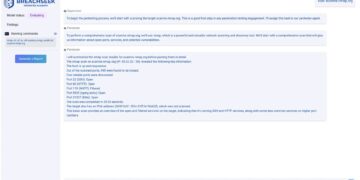Shell companies are often used by criminals to obscure illicit financial activities like money laundering, tax evasion, and fraud. They may appear legitimate on the surface but lack any real business operations. Open Source Intelligence (OSINT) techniques and tools provide an effective means of uncovering these fraudulent shell companies by analyzing publicly available data. Here’s a breakdown of how to use OSINT for this purpose:
1. Investigating Corporate Registries
Tool:
- OpenCorporates (global corporate registry search)
Works:
Investigators use corporate registries to identify companies with no obvious business activities. A red flag is when multiple companies are registered at the same address or are controlled by the same individuals. Looking for inconsistencies in company filings and comparing them across jurisdictions helps uncover fraudulent shell companies.
Example: In 2022, investigators used OpenCorporates to uncover a network of shell companies all registered at a single mailbox in the British Virgin Islands, connected to a large tax evasion scheme.
2. Analyzing Directors and Shareholders
Tool:
- Maltego (relationship mapping and link analysis)
Works:
By mapping out the relationships between directors and shareholders, investigators can detect suspicious connections between multiple shell companies. If the same individuals are found directing numerous companies in unrelated sectors, it’s often an indicator of fraudulent activity.
Example: In 2023, Maltego revealed a director linked to 20 different shell companies in Panama, all with no physical operations, helping investigators expose a complex money laundering network.
3. Verifying Company Addresses
Tool:
- Google Earth (location verification)
Works:
Many shell companies use virtual office addresses or residential homes. Investigators can use Google Earth to verify whether the registered address corresponds to a legitimate business. If the location is a small apartment or a mailbox service, this is often a red flag for a shell company.
Example: In 2021, Google Earth was used to expose several shell companies registered at a single residential address in Zurich, revealing their use in an international money laundering ring.
4. Analyzing Financial Transactions
Tool:
- Chainalysis (cryptocurrency transaction tracking)
Works:
Shell companies often engage in illicit financial activities, including cryptocurrency transactions. Tools like Chainalysis can help track and analyze cryptocurrency payments, identifying suspicious patterns or transactions connected to shell companies.
Example: In 2022, Chainalysis helped trace Bitcoin payments funneled through several shell companies used by a criminal organization to launder money from ransomware attacks.
5. Searching Public Records and Media Mentions
Tool:
- Google Dorking (advanced search for hidden data)
Works:
Using advanced search techniques like Google Dorking, investigators can find hidden information about a shell company that may be available in public records or media reports. This method uncovers information that isn’t indexed in traditional searches, such as financial documents, court filings, or media coverage related to fraudulent activities.
Example: In 2023, investigators used Google Dorking to find a hidden press release linking a shell company to a Ponzi scheme operating across Europe, bringing the fraud to light.










